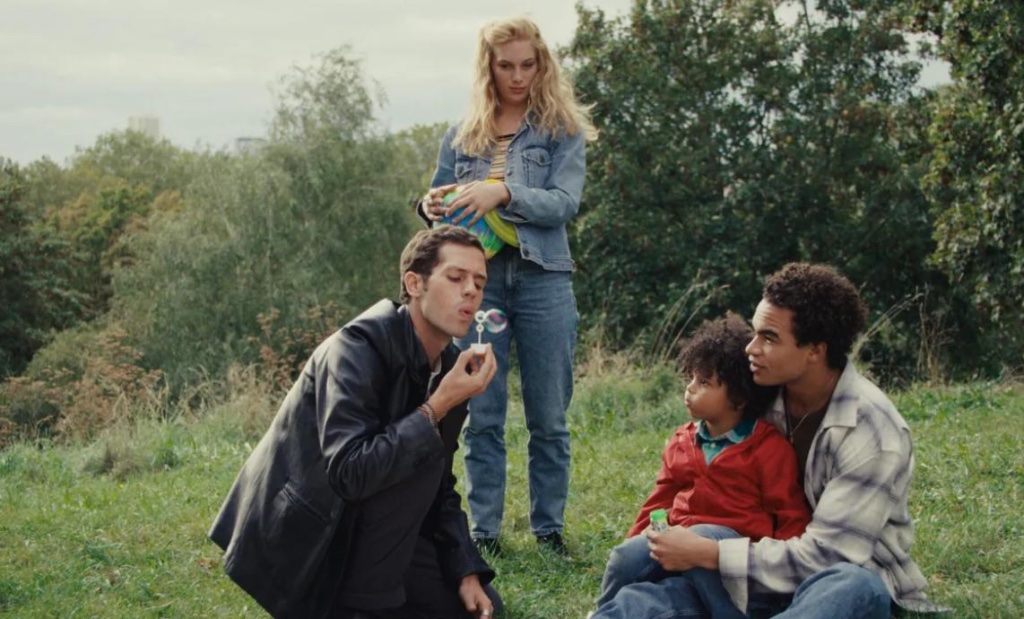There is something poignant in director Gaël Morel’s decision to situate his new film, Vivre, Mourir, Renaître (To Live, To Die, To Live Again), between 1990 and ’95; it was during that period that Morel first made his name as a young actor in André Téchiné’s iconic 1994 movie Les Roseaux Sauvages (Wild Reeds). It was also a time when the AIDS epidemic was at a turning point as scientific advances slowly changed the expectation that having this terrible disease was automatically a death sentence – the theme that Morel takes for his film.
The story revolves around a couple, Emma (Lou Lampros) and Sammy (Théo Christine), who live with their young son in the same Paris building where the talented photographer Cyril (Victor Belmondo) has his studio. After Cyril is disturbed by the noise made by Sammy’s renovation work in the apartment above, the two men agree to leave written notes in each other’s mailboxes to inform the other of their comings and goings so as to avoid disturbances – a touchingly old-fashioned exchange that reminds us that text messaging was still a thing of the future in 1990.
Very quickly, a passionate affair ensues between gay Cyril and bisexual Sammy. During their first sexual encounter, Cyril informs Sammy that he is HIV positive, which leads the two to go rushing out to find an automatic condom distributor on the street (once a fixture in Paris).
Unlike so many films portraying the epidemic in the 1980s, here we have a gay man who is honest and responsible about his condition. Emma, who knows of Sammy’s bisexuality, soon learns of the affair, and under the dark cloud of AIDS, the three form a close unit. (Morel has spoken in interviews about wanting to replicate the pattern of two men and a woman found in such classic movies as Truffaut’s Jules et Jim but to de-heterosexualize it.)
Paradoxically, the realization that he may not have long to live gives energy and life to Cyril’s work. Throughout, we see him taking photos of different situations, from nightclub life to domestic settings, and much of the beauty of the film is seen through Cyril’s creative eye. The scenes in Paris and later in Sicily are gorgeous to look at.
Perhaps a little more predictably, the soundtrack is packed with songs from the 1990s, but Morel uses different kinds of music (both pop and classical) to good effect. While the somewhat syrupy piano music that plays at emotional moments is manifestly manipulative, I have to admit to being swept along by it: it is hard not to be affected by the senseless loss of so many lives to the disease. It is also chastening to think that 1990 was 35 years ago, and that there are generations of people who have little knowledge of what went on in the 1980s and ’90s.
All three central roles are superbly played by Lampros, Christine and Belmondo. They are eminently watchable and surely destined to be stalwarts of the French cinematic scene for years to come. Morel’s direction is imaginative and assured. The film’s title is rather too clumsily descriptive of what will ensue and the movie could easily have been 10 or 15 minutes shorter, but Vivre, Mourir, Renaître, which premiered at this year’s Cannes Film Festival, deserves every success when the next awards season comes around.
Favorite
